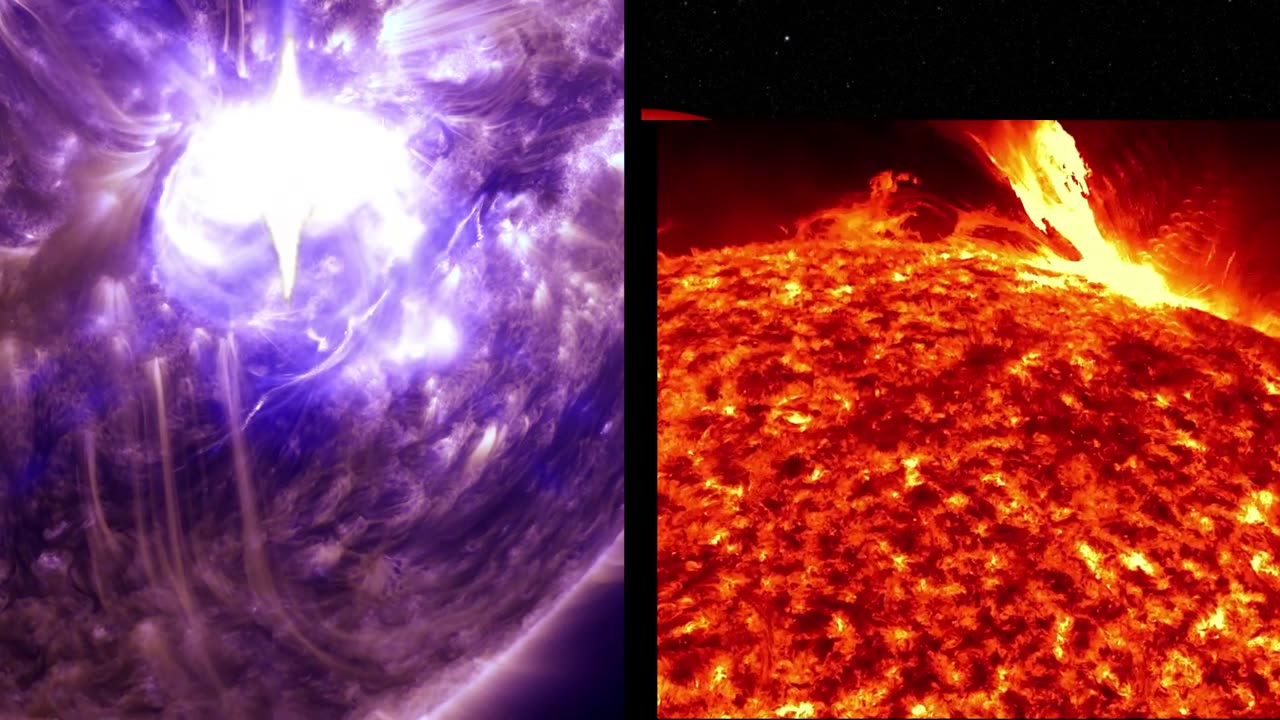Premium Only Content

NASA, NOAA: Sun Reaches Maximum Phase in 11-Year Solar Cycle
In a teleconference with reporters on Tuesday, representatives from NASA, the National Oceanic and Atmospheric Administration (NOAA), and the international Solar Cycle Prediction Panel announced that the Sun has reached its solar maximum period, which could continue for the next year.
The solar cycle is a natural cycle the Sun goes through as it transitions between low and high magnetic activity. Roughly every 11 years, at the height of the solar cycle, the Sun’s magnetic poles flip — on Earth, that’d be like the North and South poles swapping places every decade — and the Sun transitions from being calm to an active and stormy state.
NASA and NOAA track sunspots to determine and predict the progress of the solar cycle — and ultimately, solar activity. Sunspots are cooler regions on the Sun caused by a concentration of magnetic field lines. Sunspots are the visible component of active regions, areas of intense and complex magnetic fields on the Sun that are the source of solar eruptions.
“During solar maximum, the number of sunspots, and therefore, the amount of solar activity, increases,” said Jamie Favors, director, Space Weather Program at NASA Headquarters in Washington. “This increase in activity provides an exciting opportunity to learn about our closest star — but also causes real effects at Earth and throughout our solar system.”
-
 27:28
27:28
Glenn Greenwald
9 hours agoGlenn Reacts to Trump's Gaza Take Over: System Update Special
155K266 -
 2:13:49
2:13:49
Melonie Mac
5 hours agoGo Boom Live Ep 36!
68.8K9 -
 1:02:11
1:02:11
Sarah Westall
5 hours agoFreezing USAID & its Operations in Ukraine: A Massive Money Laundering Organization? w/ Sam Anthony
68.2K6 -
 2:05:35
2:05:35
Space Ice
9 hours agoSpace Ice & Redeye: Neil Breen's Pass Thru
23K1 -
 1:00:23
1:00:23
The StoneZONE with Roger Stone
5 hours agoRoger Stone Talks Trump’s Electric First 100 Day Agenda | The StoneZone w/ Roger Stone
29.2K8 -
 DVR
DVR
Redacted News
8 hours agoBREAKING! EPSTEIN LIST INCOMING UNDER AG PAM BONDI? DEMOCRATS FREAKING OUT, PRINCE ANDREW NERVOUS
174K249 -
 52:02
52:02
Candace Show Podcast
11 hours agoBecoming Brigitte: An Inaccessible Past | Ep 2
168K246 -
 2:07:26
2:07:26
2 MIKES LIVE
9 hours ago2 MIKES LIVE #176 News Breakdown Wednesday!
29.3K2 -
 1:39:11
1:39:11
I_Came_With_Fire_Podcast
10 hours agoGAZA TAKEOVER | USAID EXPLAINED | TARIFF TAKEDOWN
48.4K8 -
 37:14
37:14
The Based Mother
10 hours ago $1.44 earnedFULL OF IT! Crooked politicians say they care about children. Their actions tell a different story.
29.4K5